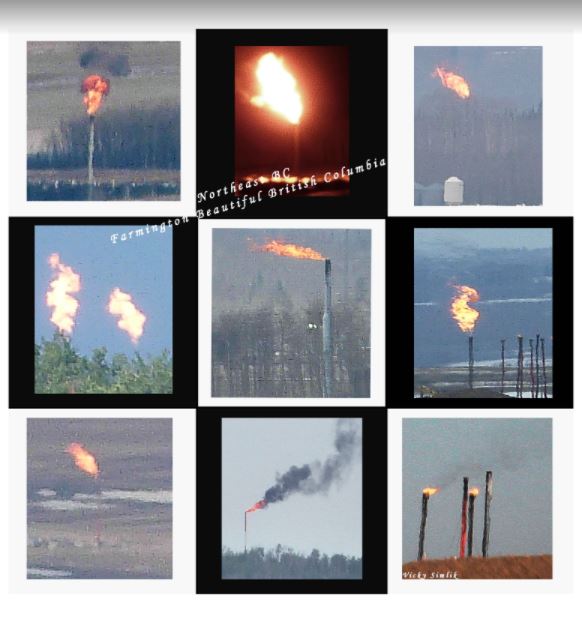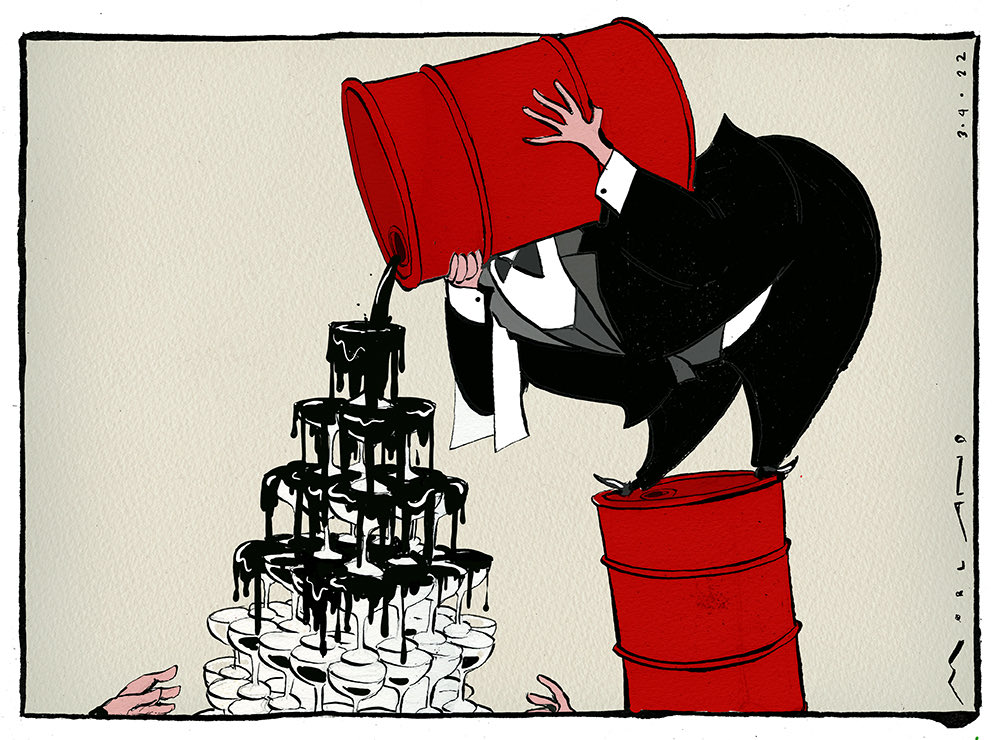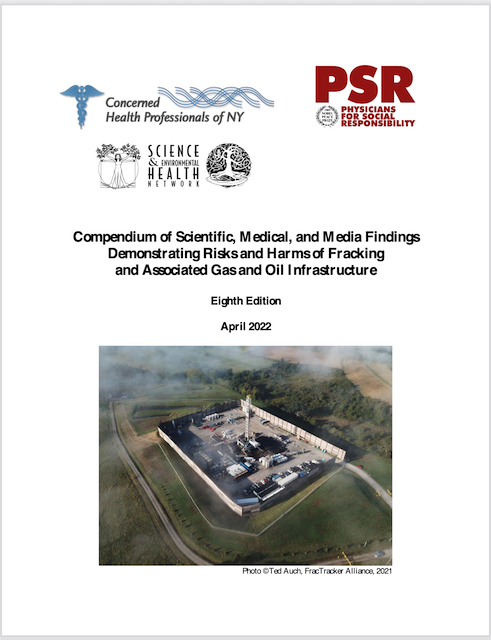![]() Hello Canada. Are you paying attention?
Hello Canada. Are you paying attention?![]()

March 12, 2014: Cochrane Interpipeline Gas Plant NW of Calgary (where polluter CEOs and deregulators at AER live and breath)


“By any responsible account,” Chief Justice Castille wrote, “the exploitation of the Marcellus Shale Formation will produce a detrimental effect on the environment, on the people, their children, and the future generations, and potentially on the public purse, perhaps rivaling the environmental effects of coal extraction.”
New Study: Alberta’s tar sands leading source of air pollution in North America, Tens of thousands of people living within reach breathing elevated levels of fine particles linked in previous studies to lung cancer, cardiovascular disease, diabetes ![]() No surprise diabetes is sky rocketing in Indigenous communities in Canada, many are severely oil, gas and frac polluted.
No surprise diabetes is sky rocketing in Indigenous communities in Canada, many are severely oil, gas and frac polluted.![]()
***
Los Angeles bans new oil wells, plans to close existing ones, “When this ordinance goes into place, there will be no new oil and gas production whatsoever,” said LA Councilmember Paul Krekorian. “That’s a pretty monumental step that we’re taking.” by Anne C. Mulkern, Dec 5, 2022, Energy Wire in Politico
The Los Angeles City Council voted unanimously Friday to ban new oil and gas wells in the city and eventually close existing ones, part of an oil phaseout trend in California.
Los Angeles officials called the move necessary to protect the health of residents who live near oil wells. It’s also aimed at curbing climate change. The nation’s second-largest city wants to achieve 100 percent carbon-free energy by 2035.
“When this ordinance goes into place, there will be no new oil and gas production whatsoever,” Councilmember Paul Krekorian said during the council meeting. “That’s a pretty monumental step that we’re taking.”
Los Angeles is one of the biggest sites of oil drilling in the nation’s most populous state, along with Kern County in the California Central Valley.
The new ban takes place as the Golden State seeks to cut oil drilling and eventually end oil consumption. The California legislature voted this year to *ban new oil wells near homes, schools, parks and other sensitive locations *
The California Air Resources Board last month released its updated “Scoping Plan,” a blueprint that lays out how the state aims to achieve carbon neutrality in 2045. The analysis identifies a desired drop in petroleum consumption of 94 percent by 2045. It also outlines a plan to phase out natural gas use in buildings
Several local California governments have passed or are considering oil drilling bans — including Los Angeles-adjacent Culver City, Los Angeles County and the cities of Antioch and Brentwood in the San Francisco Bay Area.
An oil drillers’ association criticized the ban as harmful from a climate change perspective. Oil consumption in California isn’t dropping, said Rock Zierman, chief executive of the California Independent Petroleum Association.![]() Polluters and their propagandizing health-harming enablers can stuff themselves along with Putin and Trump.
Polluters and their propagandizing health-harming enablers can stuff themselves along with Putin and Trump.![]()
That means, he said, that “every barrel we don’t produce you have to tanker in from a foreign country. They’re just moving to increase imports from foreign countries into our crowded ports.”![]() Nope. You are wrong. Non deadly alternates will move into position quickly. Today’s youth are not as ignorant, lazy and greedy as the old (racist misogynistic) white guys currently fast ruining the earth’s ability to sustain life, human and other.
Nope. You are wrong. Non deadly alternates will move into position quickly. Today’s youth are not as ignorant, lazy and greedy as the old (racist misogynistic) white guys currently fast ruining the earth’s ability to sustain life, human and other.![]()
It’s more expensive oil, which will drive up the cost of gasoline![]() Fantastic! The higher the prices go, the quicker the alternatives move in, bringing with them healthier safer jobs and healthier happier safer communities!
Fantastic! The higher the prices go, the quicker the alternatives move in, bringing with them healthier safer jobs and healthier happier safer communities!![]() , he said. It also will cut in-state jobs and “probably lead to costly litigation.”
, he said. It also will cut in-state jobs and “probably lead to costly litigation.”![]() Take your threat and stuff it up your evil ass. Satan’s waitin’ for you and your ilk, notably the enabling regulators, lawyers and judges.
Take your threat and stuff it up your evil ass. Satan’s waitin’ for you and your ilk, notably the enabling regulators, lawyers and judges.![]()
Faster oil well phaseout possible
The council vote approved a plan to shut down existing wells within 20 years. Additionally, it directed the city to study whether LA has the legal grounds to shorten that term for some oil and gas wells.
It also includes a commitment to help transition oil industry workers. There are an estimated 31,000 industry workers earning roughly $95,000 to $105,000 annually, according to a study by Occidental College.
The plan offered recommendations on how to help those workers shift to new employment, such as with the renewable energy economy.
The council billed the new oil well ban as a significant step towards helping communities with residents of color, and those with lower incomes. Many of the oil fields are located near those neighborhoods.
Affected residents include Wendy Miranda, 26, who grew up in Wilmington, an LA suburb. Her apartment sits less than a mile from an oil field, she said.
Miranda said when she was younger she loved running. But then at 15, she started having trouble breathing while exercising and was diagnosed with asthma.
Her mother also has asthma, Miranda said, and has to use a breathing assistance machine several times a day. Watching that is “heartbreaking,“ Miranda said.
“Doctors have told her that it’s because of the environment that she lives in that is causing all her health [and] respiratory issues,” Miranda said.
She praised the City Council‘s vote.
“It’s definitely a win for the community,” Miranda said. “This was definitely a community-led victory. It’s something that we’ve been fighting for for years.”
Refer also to:





New Investigation: Fractured: The body burden of living near fracking: Families in western Pennsylvania exposed to harmful chemicals; regulations failing to protect mental, physical, social health. In Alberta, doctors will not investigate if we are poisoned by oil/gas/frac’ing; will not take a blood test without politician permission
New Irish Study: Frac’ing not compatible with human rights law; “Must be banned worldwide” … “No amount of regulation can adequately address all the problems that fracking causes”

New Study: Sulfide-producing bacteria dominate hydraulically fractured shale oil & gas wells. “An estimated 70% of waterflooded reservoirs world-wide have soured.”
Sour Gas damages the brain, even at very low levels:
1. Exposure to levels below 10 ppm permanently damage the human brain
2. Harm from levels below 10 ppm by Worksafe Alberta
3. Occupational Safety & Health Administration (OSHA) LOW LEVEL HEALTH HARM WARNINGS:
Sour Gas Concentration (ppm)
Symptoms/Effects
0.01-1.5
Odor threshold (when rotten egg smell is first noticeable to some). …
2-5
Prolonged exposure may cause nausea, tearing of the eyes, headaches or loss of sleep. Airway problems (bronchial constriction) in some asthma patients.

Why no media coverage of this serious incident while reporting on a less serious smaller incident north of Swan Hills and regurgitating 3.5 month old news?
Because AER/industry know how bad frac’ing, frac hits & quakes are, how seriously life damaging they are, and what a bad rap they have?



![]() Too many judges and lawyers in USA and Canada enable devastating pollution, law violations and health harms by oil, gas and frac companies, and pimp settle ‘n gag to ensure the harms continue. May those judges and lawyers (including mine that betrayed me and the public interest) rot in hell along with ex AEC/Encana CEO Gwyn Morgan and other social, aquifer and environment murdering CEOs and their deregulating regulators.
Too many judges and lawyers in USA and Canada enable devastating pollution, law violations and health harms by oil, gas and frac companies, and pimp settle ‘n gag to ensure the harms continue. May those judges and lawyers (including mine that betrayed me and the public interest) rot in hell along with ex AEC/Encana CEO Gwyn Morgan and other social, aquifer and environment murdering CEOs and their deregulating regulators.![]()



2013: Evidence Presented by Encana to 41st PARLIAMENT, 1st SESSION Standing Committee Natural Resources; Encana taking step to stop frac’ing with benzene, diesel, chromium, arsenic, mercury etc ![]() I expect Encana was lying, as usual, and that our pollution enabling politicians knew/know it. I also expect that Encana/Ovintiv continues to inject these toxic chemicals, and many more, into and near drinking water aquifers when they frac. No wonder my body is falling apart after bathing in Encana’s frac water for over two years, and breathing the company’s (turned over to Lynx I believe avoid clean up) frac fumes spewing from the many compressors around my home, never mind the massive flares during Encana’s frac-aquifers boom. No wonder Encana changed spots to Ovintiv and ran away to the USA.
I expect Encana was lying, as usual, and that our pollution enabling politicians knew/know it. I also expect that Encana/Ovintiv continues to inject these toxic chemicals, and many more, into and near drinking water aquifers when they frac. No wonder my body is falling apart after bathing in Encana’s frac water for over two years, and breathing the company’s (turned over to Lynx I believe avoid clean up) frac fumes spewing from the many compressors around my home, never mind the massive flares during Encana’s frac-aquifers boom. No wonder Encana changed spots to Ovintiv and ran away to the USA.![]()
Benzene Exposure Near the US Permissible Limit Is Associated With Sperm Aneuploidy



Meet The Family The Tar Sands Industry Wants To Keep Quiet
At a January hearing on Baytex’s emissions, an environmental health expert hired by the Alberta government testified that many Alberta doctors are afraid to speak out against the oil sands, and afraid to connect it to health issues. A family doctor for the Albertans who live downstream from the tar sands, Dr. John O’Connor, agrees. He was threatened with having his license taken away for talking about cancer rates near the oil sands in 2006. “My experience … strongly suggests to me that government does not want to know [and] is not interested in knowing what’s going on,”
Baytex Gag Order and Can You Silence a Child? Inside the Hallowich Case; Peut-on empêcher un enfant de parler? Le cas des Hallowich ![]() Polluters, enabled by judges, do not just gag frac contaminated children and parents, they gag their heirs and their heirs and their heirs and their heirs …
Polluters, enabled by judges, do not just gag frac contaminated children and parents, they gag their heirs and their heirs and their heirs and their heirs …![]()


Alberta mother Kimberly Mildenstein. Read about her case in Andrew Nikiforuk’s Slick Water.
New study on leaking, toxic unnatural gas stoves; leak badly – most when not in use.


If you want more galling details, read Andrew Nikiforuk’s award-winning Slick Water

Andrew Nikiforuk wins Rachel Carson Environmental Book Award Honourable Mention for Slick Water

2016 10 29: USA National Science in Society Journalism Awards reception at the Witte Museum in San Antonio Texas:
Andrew Nikiforuk’s acceptance speech:
To San Antonio/National Association of Science Writers
Thank you for this great honor and for inviting me to San Antonio.
In Canada it would be difficult to fill a bus full of science writers—it is reassuring that you can still fill a entire ballroom here in the United States.
The founder of Pakistan once said that there are two powers in the world; one is the sword and other is the pen. But that there is a third power stronger than both, that of women.
So I would like to thank first my Hebredian wife, Doreen Docherty for her continued support and in making my writing possible.
Second, I’d to thank the other woman in my life: Jessica Ernst. She is a scientist and she has worked in Alberta’s oil patch for 20 years. It took her nearly a decade to trust me with her story. Prickly. Fiercely brilliant. Combative. Wedded to evidence. Uncompromising. Meticulous. Pain in the ass. That’s Ernst.
As such Slick Water is really a story about the courage of women—and that courage differs from that of men: it is civil, persistent, strategic and selfless.
Ernst’s story is dramatic. During a messy resource boom Encana, then one of her clients, fracked into a shallow aquifer in her community near Calgary, Alberta and clearly broke the law. Ernst then caught regulators behaving badly and covering up the deed. She has now spent 9 years pursuing justice and accountability in Canada’s byzantine court system.
So I want to thank the Science In Society judges in particular for recognizing her courage and strength of character. Such people can and do change the world.
Let me add a word on the dysfunctional technology of hydraulic fracturing. Politicians and the media often portray more technology as solutions to our problems. But as many science writers know, the thoughtless deployment of previous technologies has multiplied our problems. We have a word for this predicament: complexity.
Industry swore that its cracking rock technology was safe and proven, but science now tells a different story. Brute force combined with ignorance (and that’s how one executive described the technology) has authored thousands of earthquakes from British Columbia to Texas. It has called forth clouds of migrating methane in the Four Corner states. The science is complicated but clear: cracking rock with fluids is a chaotic activity and no computer model can predict where those fractures will go. The regulatory record shows that they often go out of zone; extend into water; and rattle existing oil and gas wells, and these rattled wells are leaking more methane.
The French philosopher Jacques Ellul spoke eloquently about technology and its increasingly dominant role in our lives decades ago. He thought that whenever we abdicate our responsibilities to uphold truly human values and whenever we limit ourselves to leading a trivial existence in a technological society with the sole objective of adapting to more technologies and material comforts, we turn out backs on justice and the human spirit.
My deep thanks to the National Association of Science Writers for shining a light on that spirit tonight.
2014: Fracking Injuries, deaths and dangers for workers and communities ![]() This is one of my most popular posts.
This is one of my most popular posts.![]()
…
Toxic Exposure
During the fracking process, silica sand is mixed with water and other chemicals and pumped into shale formations at high pressure to break up the rock and stimulate well production. Both onshore and offshore fracking can use hundreds of thousands of pounds of silica/sand, which creates airborne dust at the fracking site, and the National Institute of Occupational Safety and Health (NIOSH) has found that fracking sites were exposed to dust containing high levels of respirable crystalline silica.
Hydraulic fracking sand contains up to 99 percent silica. According to the Occupational Safety and Health Administration (OSHA), crystalline silica particles present in the body become trapped, causing lung inflammation and reducing the lungs’ ability to take in oxygen. Even exposure to small quantities of crystalline silica over time can lead to cancer, bronchitis, or silicosis. In a Hazard Alert issued in June 2012 by OSHA and NIOSH, seven areas of exposure to silica for fracking workers were identified:
- Dust ejected from thief hatches (access ports) on top of the sand movers during refilling operations while the machines are running (hot loading)
- Dust ejected and pulsed through open side fill ports on the sand movers during refilling operation
- Dust generated by on-site vehicle traffic
- Dust released from the transfer belt under the sand movers
- Dust created as sand drops into, or is agitated in, the blender hopper and on transfer belts
- Dust released from operations of transfer belts between the sand mover and the blender
- Dust released from the top of the end of the sand transfer belt (dragon’s tail) on sand movers
Because the fracking process is essentially the same for both onshore and offshore operations, all fracking workers face the same types of exposure. … ![]() As do families, communities, farms, pets, livestock, wildlife and fish living frac’d.
As do families, communities, farms, pets, livestock, wildlife and fish living frac’d.![]()

Encana’s waste, dumped on foodland at Rosebud, Alberta.
Enjoy that with your toast and pasta!
